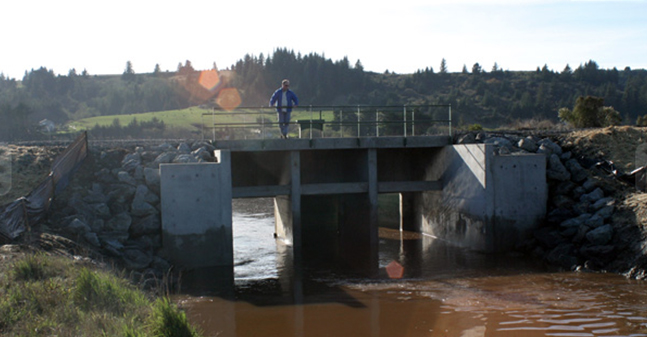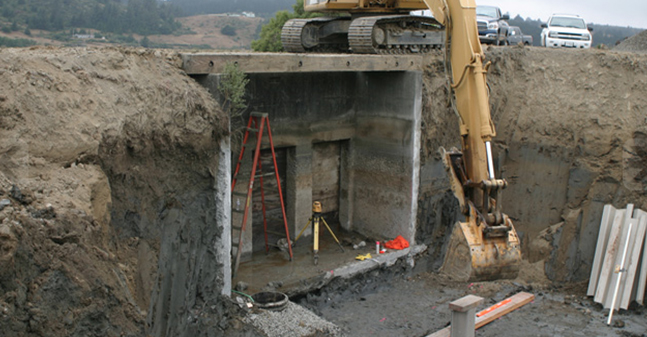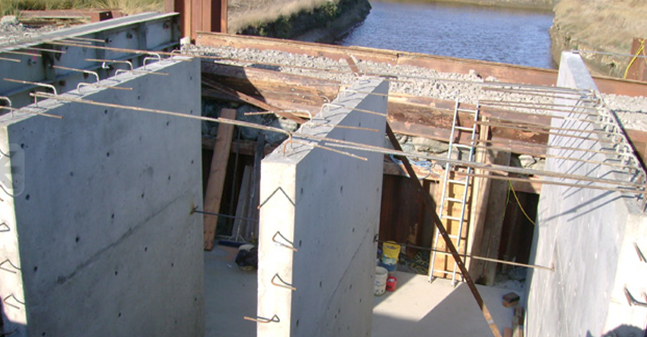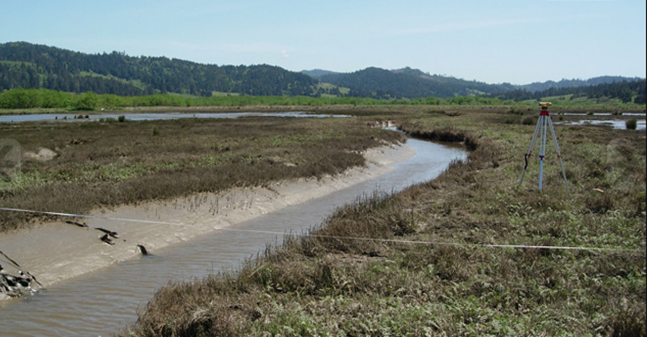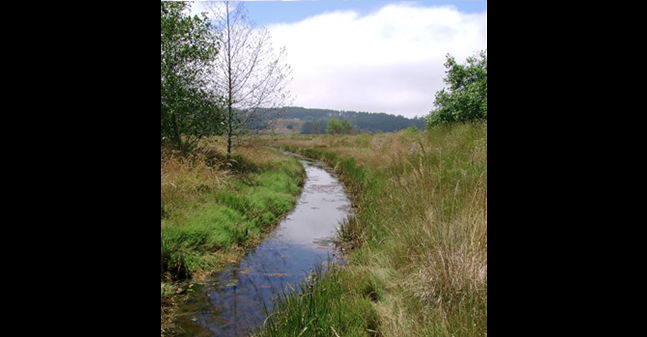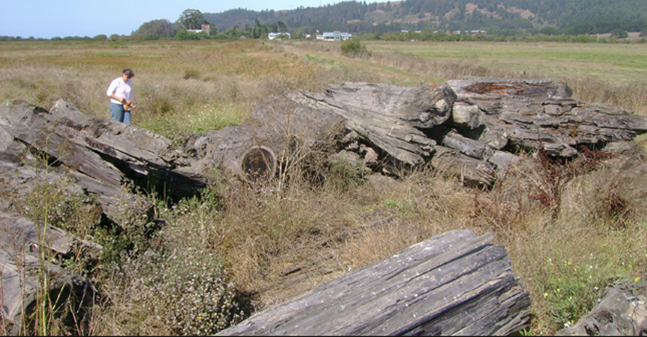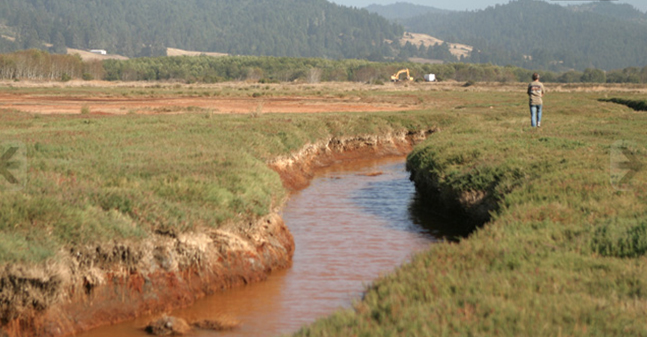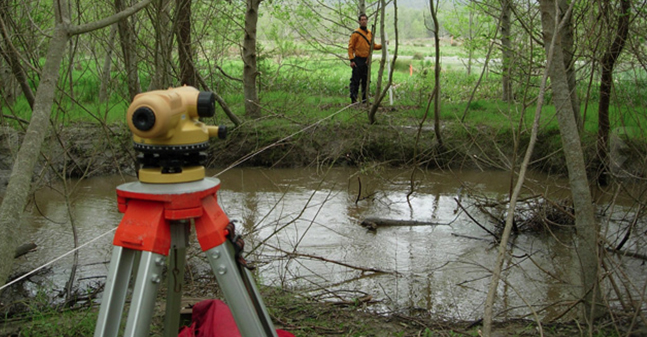Estuary Restoration
Restoring Estuary Function and Fish Passage in Salmon Creek
Location: Salmon Creek, Humboldt Bay National Wildlife Refuge, Northern California
Clients and Partners: US Fish and Wildlife Service and Pacific Coast Fish Wildlife and Wetlands Association
Salmon Creek is the third largest tributary to Humboldt Bay and historically supported large runs of Coho and Chinook salmon as well as steelhead and coastal cutthroat trout. The estuary also supported numerous marine species, including tidewater goby. The upper 2/3 of the watershed is composed of mixed redwood forests, containing almost half of the Headwaters Forest Reserve. Salmon Creek provides a unique opportunity to work at watershed improvement for anadromous salmonids literally from the headwaters to tidewater.
Salmon Creek within the boundaries of the Humboldt Bay National Wildlife Refuge was historically tidal salt marsh and slough channels. However, these lands were reclaimed for grazing during the early 1900s through a process of diking and ditching of the salt marsh and construction of tide-gates. The lands became part of the Humboldt Bay National Wildlife Refuge in 1980.
In 2002 Michael Love & Associates (MLA) led the development of a phased plan for USFWS that satisfied multiple goals and worked within the physical constraints and diverse land management objectives of the Refuge. The plan consisted of specific actions to reintroduce estuarine habitat, improve aquatic organism access, and restore fluvial processes.
For Phase 1, constructed in 2007-2008, MLAs team developed engineering designs for two new tide gate structures and prescribed channel modifications to increase tidal exchange and connectivity with existing off-channel ponds. The new tide gates have adjustable permanent openings that allow a muted tide to enter Salmon Creek, providing continuous aquatic organism passage and reintroducing upstream tidal influence and estuarine function. The large outflow gates increase conveyance of floodwaters and sediment.
MLA serves as the project engineer for design of Phase 2 improvements, which began in 2010 will be completed in October 2011. These include construction of nearly one mile of new tidal slough channels, four off-channel tidally influenced ponds, and installation of over 100 pieces of large wood. The new channels and ponds will provide much needed salmonid and tide water goby rearing habitat in the ecotone between estuarine and freshwater systems.
The channel and ponds will include large wood features and log jams that will provide grade control, habitat, cover and a wood source to the stream. The new channel banks upstream of tidewater will be stabilized with bioengineering and riparian plantings.
The approximately 45,000 cubic yards of excavated soil will be used to raise subsided lands to elevations suitable for sustaining a salt marsh plain in the lower estuary.


